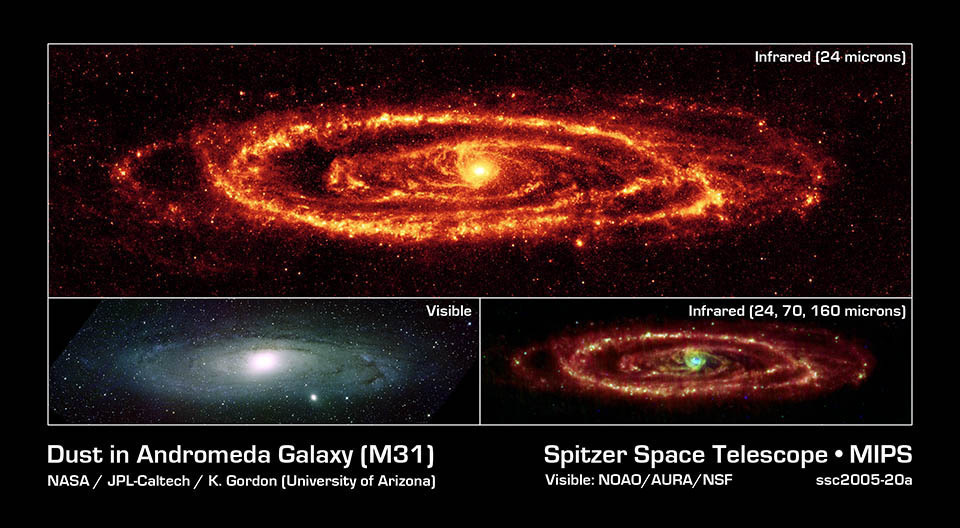University of Michigan, Ann Arbor | 2018 Jul 23
Scientists at the University of Michigan have deduced that the Andromeda galaxy, our closest large galactic neighbor, shredded and cannibalized a massive galaxy two billion years ago.In this image, the Andromeda galaxy shreds the large galaxy M32p,
which eventually resulted in M32 and a giant halo of stars.
Credit: Richard D’Souza. Image of M31 courtesy of Wei-Hao Wang.
Image of stellar halo of M31 courtesy of AAS/IOP.
Even though it was mostly shredded, this massive galaxy left behind a rich trail of evidence: an almost invisible halo of stars larger than the Andromeda galaxy itself, an elusive stream of stars and a separate enigmatic compact galaxy, M32. Discovering and studying this decimated galaxy will help astronomers understand how disk galaxies like the Milky Way evolve and survive large mergers.
This disrupted galaxy, named M32p, was the third-largest member of the Local Group of galaxies, after the Milky Way and Andromeda galaxies. Using computer models, Richard D’Souza and Eric Bell ... were able to piece together this evidence, revealing this long-lost sibling of the Milky Way. ...
Using new computer simulations, the scientists were able to understand that even though many companion galaxies were consumed by Andromeda, most of the stars in the Andromeda’s outer faint halo were mostly contributed by shredding a single large galaxy. ...
The Andromeda galaxy’s most important merger about 2 billion years ago as M32’s likely progenitor - Richard D’Souza, Eric F. Bell
- Nature Astronomy (online 23 Jul 2018) DOI: 10.1038/s41550-018-0533-x
arXiv.org > astro-ph > arXiv:1807.08819 > 23 Jul 2018

